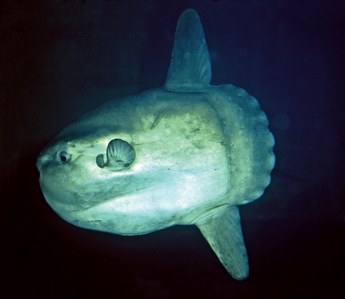General Description
Body very deep, slightly oblong to nearly circular in lateral profile, with thick leathery skin covered in rough denticles; caudal fin absent, replaced by a clavus; clavus with a scalloped margin, supported by about 12 rays, with 8-9 rays bearing widely separated ossicles, and a visible band of reduced denticles (smoother to the touch than surrounding skin) at base between dorsal and anal fins; pectoral fin small, rounded, not fitting into shallow groove on side of body. Dull brown or greyish above becoming whitish below, sides occasionally spotted. To 4 m.
Biology
Sunfishes feed mainly on soft-bodied invertebrates, such as jellyfishes, salps and ctenophores.
Habitat
Tropical and temperate seas, typically oceanic but occasionally coming inshore, mostly seen at ocean surface but can descend to deep water.
Open water
Distribution guide
Worldwide.
Species Group
Depth
Shallow (1-30 m)
Deep ( > 30 m)
Water Column
Max Size
4 m
Commercial Species
No
Global Dispersal
Recorded in Australia
Conservation Status
- DSE Advisory List : Not listed
- EPBC Act 1999 : Not listed
- IUCN Red List : Not listed






